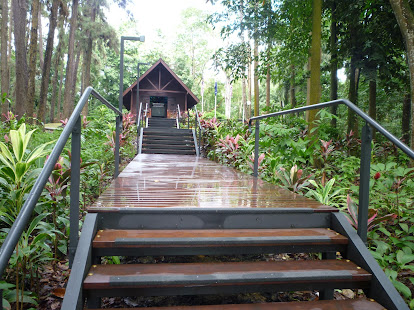Over the years, Sandakan has made notable progress in terms of infrastructure. With the Chief Minister himself serving as the state assemblyman for Sungai Sibuga, an area just next to Sandakan, it is evident that he has invested significant effort in developing this region. His long-term vision is to transform Sandakan into the education hub of Sabah.
Yet, it was a little disheartening to see that Sandakan, once affectionately known as “Little Hong Kong,” is gradually losing that identity. The rapid influx of new communities of different ethnicities has changed the town’s character considerably. When we went in search of a traditional Chinese coffee shop for our afternoon tea, it proved to be quite a challenge. Eventually, we managed to find one tucked away in a row of old shophouses on the hillside - the original Sandakan town. To our surprise, all the shop assistants were non-Chinese, and even the owner appeared to be of mixed heritage. (Not meant as a complaint - just an observation of how much the town has changed.) Around the seafront area, almost all the shops are now run by non-Chinese. Taking a stroll there, one might almost feel transported to Kelantan or Terengganu!
Thankfully, our stay was made especially pleasant by checking into Sandakan’s latest landmark hotel - the Four Points by Sheraton. It was indeed a fine choice, offering both comfort and class. The view from the 24th floor was nothing short of spectacular, a perfect vantage point to take in the evolving face of Sandakan.
Agnes Keith, an American author who lived in Sabah with her husband during the 1930s and 40s, is remembered not only for her evocative writings but also for giving Sabah its enduring identity as the “Land Below the Wind” - a phrase she popularized in her book of the same title. Today, the house stands as a museum, offering visitors a glimpse into the life of colonial-era expatriates while also honoring the woman whose words helped put Sabah on the literary and cultural map.
The memorial is not only a place of mourning but also a powerful reminder of the resilience of the human spirit and the heavy price of conflict. It deserves to be preserved in perpetuity - not only as a tribute to those who suffered and died here, but also as a lasting reminder of the atrocities of war and the importance of striving for peace.













No comments:
Post a Comment